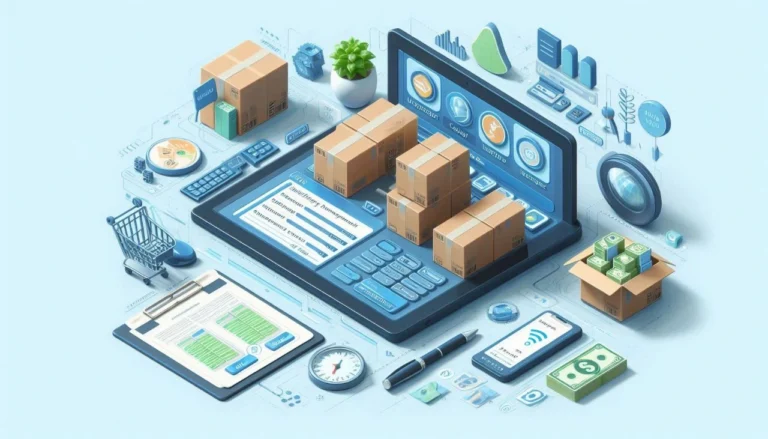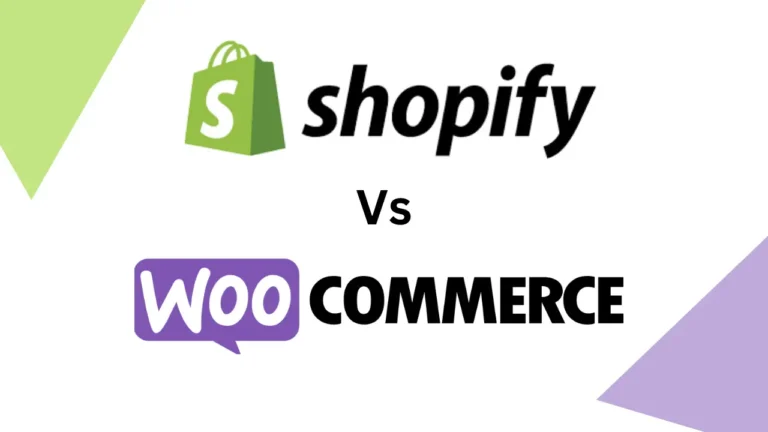The Ultimate Shopify Dropshipping Guide for 2025: From Zero to Profit
Hey there! Welcome to this ultimate Shopify Dropshipping Guide. Ready to dive into the wild world of Shopify dropshipping? Buckle up, because I’m about to spill all the tea on how I went from a clueless newbie to running a profitable online store – and how you can too!
First things first, let me hit you with a mind-blowing stat: did you know that the global dropshipping market is expected to reach a whopping $557.9 billion by 2025? That’s a billion with a ‘B’, folks! When I first stumbled upon this little factoid, my jaw hit the floor. I mean, talk about a gold rush, right?
Now, you might be wondering, “What the heck is Shopify dropshipping anyway?” Well, let me break it down for you in plain English. Imagine running an online store where you never have to touch a single product, deal with dusty warehouses, or lose sleep over inventory nightmares. Sounds too good to be true, right? Well, pinch yourself, because that’s exactly what dropshipping is!
Here’s how it works: you set up a snazzy online store using Shopify (trust me, it’s easier than assembling IKEA furniture), list some awesome products, and when a customer buys something, you simply forward the order to your supplier. They ship it directly to your customer, and you pocket the difference. It’s like being a middleman, but in your pajamas!
Now, I know what you’re thinking: “If it’s so easy, why isn’t everyone doing it?” Well, hold your horses! While dropshipping isn’t rocket science, it’s not a get-rich-quick scheme either. Trust me, I learned that the hard way when I first started. There were times when I wanted to throw my laptop out the window and go back to my soul-sucking 9-to-5. But with a bit of grit, a lot of coffee, and the tips I’m about to share with you, I managed to turn things around.
In this guide, we’re going to cover everything from setting up your Shopify store and finding red-hot products to marketing like a pro and scaling your business to the moon. I’ll share all the mistakes I made (and boy, were there many!) so you can avoid them, and all the tricks I learned along the way.
Whether you’re a complete newbie looking to start your first side hustle, or an experienced e-commerce player wanting to add dropshipping to your arsenal, this guide’s got you covered. So, grab your favourite beverage, get comfy, and let’s embark on this dropshipping adventure together!
Ready to transform your life and build a thriving online business? Let’s dive in!
Table of Contents
What is Shopify Dropshipping and How Does it Work?
Alright, let’s break this down like we’re chatting over coffee. Shopify dropshipping is basically the lovechild of e-commerce and outsourcing. It’s like being a store owner but without the headache of managing inventory or shipping boxes yourself.
Here’s the deal: you set up an online store using Shopify (more on that later), and you list products that you don’t actually have in your possession. Crazy, right? When a customer places an order, you turn around and order that same product from your supplier, who then ships it directly to your customer. You’re essentially the middleman, but a very smart one!
Now, why Shopify? Well, let me tell you about my first attempt at dropshipping using a clunky, self-hosted website. It was a nightmare! I spent more time troubleshooting tech issues than actually selling. Then I discovered Shopify, and it was like the clouds parted and angels started singing. It’s user-friendly, packed with features, and plays nice with tons of dropshipping apps. It’s like the Swiss Army knife of e-commerce platforms.
But hey, it’s not all rainbows and unicorns. Like any business model, dropshipping has its pros and cons. Let’s break ’em down:
Pros:
- Low startup costs – You don’t need to buy inventory upfront.
- Location independence – Run your biz from anywhere with WiFi.
- Wide product selection – You can sell almost anything!
- Easy to scale – No need to worry about warehousing as you grow.
Cons:
- Lower profit margins – You’re not buying in bulk, so prices are higher.
- Less control over shipping – Your supplier handles this, for better or worse.
- High competition – It’s a popular model, so standing out can be tough.
- Potential supplier issues – Stock shortages or quality control can be a headache.
I learned about these pros and cons the hard way. In my first month, I was over the moon about making sales without touching a single product. But then came the avalanche of customer service issues due to slow shipping times. It felt like putting out fires with a water gun!
But don’t let that scare you off. With the right strategy (which we’ll dive into), you can mitigate these cons and build a thriving dropshipping business. Remember, every business has challenges – it’s how you handle them that sets you apart.
So, are you ready to jump into the world of Shopify dropshipping? Buckle up, because in the next section, we’re going to get our hands dirty setting up your very own Shopify store!
Getting Started with Shopify Dropshipping Guide
Alright, future dropshipping superstar, it’s time to roll up our sleeves and get your Shopify store up and running. Don’t worry if you’re not a tech whiz – I once thought ‘HTML’ was a sandwich, and look at me now!
First things first, head over to Shopify and sign up for an account. They offer a 14-day free trial, which is plenty of time to get your feet wet. Once you’re in, it’s time to choose a theme for your store. Now, I know it’s tempting to spend hours agonizing over the perfect theme, but trust me, done is better than perfect. Pick something clean and mobile-friendly – you can always jazz it up later.
When I started, I chose a fancy theme with all the bells and whistles. Big mistake! It slowed down my site and confused my customers. Keep it simple, folks.
Next up, let’s tackle the basic store setup. This includes:
- Setting up payments: Shopify Payments is a no-brainer if it’s available in your country. If not, PayPal is a solid choice.
- Configuring shipping: Start with flat-rate shipping to keep things simple.
- Adding your domain: A custom domain looks way more professional than ‘your-store.myshopify.com’.
- Setting up taxes: Shopify has built-in tax calculations, but consult with a pro to make sure you’re all squared away.
Now, here’s where the magic happens – installing dropshipping apps. Oberlo used to be the go-to, but since it’s shutting down, I recommend checking out DSers or Spocket. These apps connect your store to suppliers and automate a lot of the ordering process.
A word of caution from someone who learned the hard way: don’t go app-crazy! I once installed so many apps that my store ran slower than a snail in molasses. Stick to the essentials for now.
Oh, and here’s a pro tip: set up a separate email for your store. Trust me, you don’t want supplier notifications clogging up your personal inbox. Been there, done that, missed important emails for a week!
Now, I know what you’re thinking – “This all sounds great, but what about products? What am I supposed to sell?” Well, my eager friend, that’s exactly what we’re diving into in the next section. Get ready to become a product-hunting ninja!
Remember, setting up your store is just the beginning. It might feel overwhelming at first (I definitely stress-ate my way through a pint of ice cream during my setup), but stick with it. Soon, you’ll be navigating Shopify like a pro, and that first sale will feel sweeter than any dessert!
Finding the Right Products and Suppliers
Alright, future e-commerce tycoon, it’s time for the fun part – filling your store with awesome products that’ll fly off the virtual shelves! But hold your horses, because choosing the right products and suppliers can make or break your dropshipping biz. Trust me, I once spent weeks promoting a product that I thought was the next big thing, only to find out it was about as popular as socks for phones. Yep, that’s a real thing, and nope, it didn’t sell.

First up, let’s talk about finding your niche. When I started, I tried to sell everything under the sun. Big mistake! I was spreading myself too thin and competing with the Amazons of the world. Instead, focus on a specific niche. Maybe it’s eco-friendly kitchen gadgets, or funky socks for dog lovers. The key is to find a niche that’s specific enough to stand out, but broad enough to have a decent customer base.
Now, onto product research. This is where you put on your detective hat and start digging. Here are some of my favourite tools:
- Google Trends: Great for seeing what’s hot and what’s not.
- Amazon Best Sellers: A goldmine of product ideas.
- AliExpress: Browse their top-selling products for inspiration.
- Social media: Instagram and Pinterest are fantastic for spotting trending products.
Remember, you’re looking for products with a ‘wow’ factor. Something that makes people go, “I need that in my life!” Bonus points if it solves a problem or taps into a passion.
Once you’ve got your product ideas, it’s time to find suppliers. This is crucial, folks. A bad supplier can sink your business faster than you can say “Where’s my order?” Here’s how to find and vet suppliers:
- Use trusted platforms: AliExpress, Spocket, and CJdropshipping are good starting points.
- Check reviews and ratings: Look for suppliers with lots of positive feedback.
- Order samples: Always, always test the products yourself before selling them.
- Communication is key: A good supplier should respond promptly to your questions.
I once worked with a supplier who seemed great on paper but turned out to be slower than a sloth on vacation. Learn from my mistake – take the time to vet your suppliers thoroughly!
Now, let’s talk about importing products to your Shopify store. If you’re using a dropshipping app like DSers, this process is pretty straightforward. You can browse products directly in the app and add them to your store with a few clicks. Just remember to customize your product descriptions and images – don’t just copy-paste from the supplier!
Speaking of product descriptions, here’s a pro tip: don’t just list features, focus on benefits. Instead of saying “100% cotton,” say “Stay cool and comfortable all day long.” See the difference?
Alright, your store is set up, you’ve got great products from reliable suppliers – you’re almost ready for the big leagues! But before you start raking in those sales, we need to make sure your store is optimized to convert visitors into customers. And that, my friend, is exactly what we’re covering in the next section. Get ready to turn your store into a lean, mean, selling machine!
Optimizing Your Shopify Dropshipping Store
Alright, future e-commerce mogul, you’ve got your store set up and stocked with awesome products. Now it’s time to make it shine brighter than a diamond in a goat’s nose! (Yeah, I don’t know where that came from either, but stick with me here.)
First up, let’s talk about product descriptions. This is where I royally messed up when I started. I just copied and pasted the supplier’s descriptions, which were about as exciting as watching paint dry. Big mistake! Your product descriptions are your sales pitch, so make them sizzle!
Here’s my formula for killer product descriptions:
- Start with a bang: Grab attention with a bold statement or question.
- Highlight benefits, not just features: Don’t just say “stainless steel,” say “Never worry about rust again!”
- Use sensory words: Make them feel, taste, smell, or hear the product.
- Add social proof: “Join the 10,000+ happy customers who love this product!”
- End with a call to action: “Grab yours now before they’re gone!”
Next up, let’s talk about product images. You know that saying “a picture is worth a thousand words”? Well, in e-commerce, a good product image is worth a thousand sales. I learned this the hard way when I used low-quality supplier images and my conversion rate was lower than my high school math grades.
Here are some tips for knockout product images:
- Use high-quality, clear images. No blurry shots allowed!
- Show the product from multiple angles.
- Include lifestyle shots of people using the product.
- Add infographics for products with lots of features.
- Be honest – don’t use misleading images.
Now, let’s talk about your store’s navigation. You want your customers to flow through your store smoother than butter on a hot pancake. Start by setting up logical collections. Group similar products together, and make sure your menu is easy to understand. I once had a store with a navigation menu that was more confusing than a maze designed by M.C. Escher. Needless to say, my bounce rate was through the roof!
And let’s not forget about SEO. Yeah, I know, SEO sounds about as fun as a root canal, but it’s crucial for getting organic traffic. Here are some Shopify SEO tips that won’t make your brain explode:
- Use descriptive, keyword-rich URLs for your products and collections.
- Optimize your page titles and meta descriptions.
- Use alt text for your images (bonus: this helps with accessibility too!).
- Create a blog and post regular, relevant content.
- Build backlinks by reaching out to bloggers in your niche.
I used to think SEO was all about stuffing keywords everywhere. Let me tell you, “Buy the best awesome cool product now” does not make for a good page title. Keep it natural, folks!
Lastly, make sure your store is mobile-friendly. More and more people are shopping on their phones, so your store needs to look good on screens of all sizes. Shopify themes are generally pretty good with this but always double-check on different devices.
Remember, optimization is an ongoing process. Keep testing, tweaking, and improving. It’s like gardening – a little attention every day goes a long way.
Alright, your store is looking slick and running smooth. But a great store is nothing without customers. So, in the next section, we’re going to dive into the wild world of marketing your dropshipping business. Get ready to make some noise and attract those customers like bees to honey!
Marketing Your Dropshipping Business
Alright, future marketing maestro, it’s time to get the word out about your awesome Shopify store! When I first started, I thought “If you build it, they will come.” Spoiler alert: they didn’t. I quickly learned that in the world of e-commerce, you’ve got to make some noise to be heard. So, let’s dive into some marketing strategies that won’t break the bank but will definitely break your sales records!
First up, is social media marketing. This is where the magic happens, folks. But here’s the kicker – you don’t need to be on every platform. I once spent hours crafting the perfect MySpace page for my store. Yeah, you read that right, MySpace. Don’t be like me. Focus on platforms where your target audience hangs out.
Here are some social media tips:
- Instagram: Perfect for visual products. Use high-quality images and relevant hashtags.
- Facebook: Great for building a community. Create a business page and join relevant groups.
- Pinterest: Ideal for driving traffic to your store. Create boards that align with your niche.
- TikTok: If your audience is younger, short, fun videos can work wonders.
Remember, social media is about being social. Don’t just push products – engage with your followers, share valuable content, and build relationships.
Next up, is email marketing. Don’t listen to anyone who says email is dead. It’s alive and kicking, and it’s a fantastic way to nurture leads and drive sales. Start building your email list from day one. Offer a discount code in exchange for email signups. Then, keep your subscribers engaged with regular newsletters, exclusive offers, and valuable content.
Pro tip: Segment your email list based on customer behaviour. I once sent a “Hey, we miss you!” email to someone who had just made a purchase. Talk about awkward!
Now, let’s talk about paid advertising. I know, I know, the word “paid” might make your wallet quiver in fear. But hear me out. Platforms like Facebook Ads and Google Ads can be incredibly powerful when used correctly. Start small, test different ad formats and audiences, and scale up what works.
When I first tried Facebook Ads, I targeted everyone between 18-65 in the entire United States. My ad spend disappeared faster than a plate of cookies at a kids’ party. Lesson learned: be specific with your targeting!
Don’t forget about influencer marketing. You don’t need Kylie Jenner to promote your products (unless you’re selling lip kits, I guess). Micro-influencers in your niche can be incredibly effective and much more affordable. Look for influencers with engaged followers, not just high follower counts.
Here’s a strategy that worked wonders for me: create a “brand ambassador” program. Offer loyal customers and small influencers free products or commissions in exchange for promoting your store. It’s like having a passionate sales team without the hefty paychecks!
Lastly, content marketing. Start a blog on your Shopify store and create content that adds value to your customers’ lives. This not only helps with SEO but also positions you as an authority in your niche. I once wrote a blog post about “10 Unusual Uses for Rubber Ducks” for my novelty gift store. It went viral and drove a ton of traffic to my site. Who knew people were so passionate about rubber ducks?
Remember, marketing is all about testing and learning. What works for one store might not work for another. Keep trying new things, measure your results, and double down on what works.
Alright, your marketing machine is revving up, and customers are starting to pour in. But wait, there’s more! In the next section, we’re going to talk about how to handle all those orders and keep your customers happier than a kid in a candy store. Get ready to become a customer service superstar!
Managing Orders and Customer Service
Alright, future customer service superstar, let’s talk about managing orders and keeping your customers so happy they’ll be singing your praises from the rooftops! When I first started, I thought the hard part was getting customers. Boy, was I wrong! Keeping them happy is where the real challenge (and fun) begins.
First things first, let’s talk about setting up your order fulfilment process. This is where the rubber meets the road in dropshipping. You want this process to be smoother than a freshly waxed bowling lane. Here’s what I’ve learned:
- Automate, automate, automate: Use apps like DSers or Spocket to automatically forward orders to your supplier. Trust me, manually placing each order is about as fun as watching paint dry.
- Double-check everything: Even with automation, always review orders before they’re sent to the supplier. I once didn’t check an order and ended up sending 100 red t-shirts instead of 1. Oops!
- Set up tracking: Make sure you have a system to track orders from supplier to customer. Shopify has some great built-in tools for this.
- Communicate: Keep your customers in the loop about their order status. A simple “Your order has been shipped!” email can prevent a lot of “Where’s my stuff?” queries.
Now, let’s tackle the elephant in the room – returns and refunds. I know, I know, nobody likes to think about returns. But trust me, having a clear, fair return policy can boost sales. People are more likely to buy if they know they can return something easily.
Here’s my advice for handling returns and refunds:
- Have a clear policy: Make your return policy easy to find and understand. No legal jargon, please!
- Be generous (within reason): I started with a strict 7-day return policy and got more complaints than a vegan at a BBQ. When I extended it to 30 days, customer satisfaction skyrocketed.
- Make it easy: Provide clear instructions on how to return items. Consider including a return label with orders.
- Learn from returns: Every return is an opportunity to improve. If you’re getting lots of returns for a particular product, maybe it’s time to find a new supplier.
Now, let’s talk about the secret sauce of any successful business – excellent customer service. When I started, I thought I could handle customer service in my spare time. Ha! That lasted about as long as my New Year’s resolution to go to the gym every day.
Here are some tips to provide stellar customer service:
- Be responsive: Aim to respond to all queries within 24 hours. I use a chatbot for instant responses, but make sure customers can easily reach a real person if needed.
- Be empathetic: Remember, there’s a real person behind every email or chat message. A little empathy goes a long way.
- Go the extra mile: Once, I had a customer who needed a product for a wedding the next day, but shipping would take too long. I found a similar product locally and personally delivered it to her. Yes, I lost money on that sale, but I gained a loyal customer who’s referred dozens of others.
- Use templates (but personalize them): Having response templates for common questions can save time, but always add a personal touch.
- Follow up: After resolving an issue, follow up to make sure the customer is happy. It’s like sprinkling magic customer satisfaction dust!
Now, let’s address the elephant in the room – shipping times. With dropshipping, especially if you’re using overseas suppliers, shipping can sometimes take longer than a sloth running a marathon. Here’s how to handle it:
- Be upfront: Clearly state shipping times on your product pages and at checkout.
- Offer expedited shipping: Even if it cuts into your margins, giving customers the option for faster shipping can increase conversions.
- Under-promise and over-deliver: If shipping typically takes 10-20 days, tell customers it takes 15-25. They’ll be thrilled when it arrives “early”!
- Provide tracking: Even if it’s slow, customers feel better when they can track their package.
Remember, every interaction with a customer is an opportunity to build your brand. I once had a customer leave a negative review because their order was late. Instead of getting defensive, I apologized, expedited a replacement, and threw in a freebie. They updated their review to 5 stars and became a repeat customer.
Managing orders and customer service can feel overwhelming at times, but get it right, and you’ll have customers more loyal than a golden retriever. Plus, happy customers mean more sales, and more sales mean… well, you know where I’m going with this!
Alright, customer service superstar, you’re now equipped to handle orders like a pro and turn your customers into raving fans. But what happens when those orders start rolling in faster than you can handle? That’s right, it’s time to talk about scaling your Shopify dropshipping business. In the next section, we’ll dive into how to take your business from side hustle to empire. Get ready to dream big!
Scaling Your Shopify Dropshipping Business
Alright, future e-commerce mogul, it’s time to talk about every entrepreneur’s dream – scaling up! You’ve got your store running smoothly, orders are coming in, and customers are happy. Now, how do we turn this side hustle into a full-blown empire? Buckle up, because we’re about to shift into high gear!
First things first, let’s talk about analyzing your store’s performance. When I started, I was as clueless about analytics as a cat is about astrophysics. But trust me, understanding your numbers is crucial for scaling. Here are the key metrics you should be watching:
- Conversion Rate: This is the percentage of visitors who make a purchase. If it’s lower than 2%, it’s time to optimize your store.
- Average Order Value (AOV): The higher this is, the more profit you make per customer. I once increased my AOV by 30% just by adding a “Frequently Bought Together” section.
- Customer Acquisition Cost (CAC): How much are you spending to get each customer? If this is higher than your profit per customer, Houston, we have a problem.
- Return on Ad Spend (ROAS): For every dollar you spend on ads, how much are you getting back? Aim for at least 3:1.
- Cart Abandonment Rate: If this is high, you might need to optimize your checkout process or offer free shipping.
Shopify has great built-in analytics, but I also recommend Google Analytics for more in-depth data. Remember, data is your friend. Embrace it!
Now, let’s talk about expanding your product range. When I first started scaling, I went a bit product-crazy. I added everything under the sun to my store. Big mistake! I ended up with a store that was more confusing than a chameleon in a bag of Skittles.
Instead, focus on expanding within your niche. Look for complementary products or variations of your best-sellers. For example, if you’re selling yoga mats, consider adding yoga blocks, straps, or workout clothes.
Pro tip: Use your customer data to guide your product decisions. If customers who buy product A often also buy product B, make sure you’re offering both!
As you scale, automation becomes your best friend. Trust me, trying to do everything manually is like trying to bail out the Titanic with a teaspoon. Here are some processes you should consider automating:
- Order fulfilment: Use apps like DSers or Spocket to automatically send orders to your supplier.
- Email marketing: Set up automated email sequences for welcome emails, abandoned cart reminders, and post-purchase follow-ups.
- Social media posting: Use tools like Buffer or Hootsuite to schedule your posts in advance.
- Customer service: Set up chatbots for common queries and use a helpdesk system to manage tickets.
Remember, the goal of automation is to free up your time so you can focus on growing your business, not to replace the human touch entirely.
Now, as your business grows, you might find yourself drowning in tasks. This is where building a team comes in. I resisted hiring help for way too long, trying to be a one-person army. Let me tell you, burnout is real, and it’s not pretty.
Start by identifying tasks that are time-consuming but don’t necessarily need your personal touch. For me, this was product description writing and customer service. I hired a freelance writer and a part-time customer service rep, and suddenly I had time to breathe (and grow my business) again.
When hiring, look for people who are not just skilled, but also passionate about your niche. I once hired a customer service rep who was as enthusiastic about eco-friendly products as I was, and our customers loved her!
As you scale, don’t forget about your suppliers. The supplier who was perfect when you were getting 10 orders a day might not cut it when you’re getting 100. Don’t be afraid to negotiate better rates or look for new suppliers who can handle larger volumes.
Lastly, never stop learning and adapting. The e-commerce landscape changes faster than fashion trends in the 90s. Stay updated on industry news, attend webinars, and join entrepreneur groups. I’ve gotten some of my best-scaling ideas from chatting with other store owners over virtual coffee.
Remember, scaling isn’t just about getting bigger – it’s about getting better. It’s about creating systems that allow your business to grow without sacrificing quality or customer satisfaction.
Alright, scaling superstar, you’re now equipped to take your Shopify dropshipping business to the next level. But wait, there’s more! In our final section, we’ll tackle some common challenges in Shopify dropshipping and how to overcome them. Because let’s face it, no road to success is without a few potholes. Let’s learn how to navigate them like a pro!
Common Challenges in Shopify Dropshipping and How to Overcome Them
Alright, future dropshipping dynamo, we’ve covered a lot of ground. But let’s get real for a minute – this journey isn’t all sunshine and rainbows. There are challenges lurking around every corner. But don’t worry! I’ve faced them all (and then some), and I’m here to help you navigate these treacherous waters.
First up, let’s talk about the elephant in the room – competition. When I started, I thought I’d stumbled upon a secret goldmine. Turns out, about a million other people had the same idea. Talk about a reality check!
Here’s how to stand out in a crowded market:
- Find your unique angle: Maybe you offer better customer service, or perhaps you cater to a specific sub-niche. I once turned my generic pet supplies store into a hugely successful “Eco-Friendly Pet Products” store. Suddenly, I wasn’t competing with everyone and their dog (pun intended).
- Build a brand: Don’t just be another faceless store. Create a brand personality that resonates with your target audience. Share your story, your values, your mission. People buy from people, not faceless entities.
- Provide value beyond products: Start a blog, create helpful videos, and build a community. I started a Facebook group for eco-conscious pet owners, and it became a goldmine for product ideas and customer loyalty.
- Focus on customer experience: Make buying from you so enjoyable that customers wouldn’t dream of going elsewhere. I once sent a handwritten thank-you note with each order. Yes, it was time-consuming, but the customer response was worth it!
Next up, let’s tackle the cash flow riddle. In dropshipping, you’re often paying for products before you get paid by customers. This can lead to some serious cash flow headaches if you’re not careful.
Here’s how to keep your cash flow healthy:
- Negotiate better payment terms with suppliers: Some suppliers might agree to invoice you weekly or monthly instead of for each order.
- Use a business credit card: This can give you some breathing room between paying suppliers and getting paid by customers. Just be sure to pay it off each month!
- Keep a cash reserve: Always have enough cash on hand to cover at least a month of expenses.
- Monitor your metrics closely: Keep an eye on your profit margins and adjust prices if necessary.
- Consider financing options: As you grow, options like Shopify Capital can help smooth out cash flow bumps.
Now, let’s chat about something that keeps many dropshippers up at night – seasonal fluctuations. One month you’re rolling in sales, the next it’s crickets. I once had a store selling beach accessories. Summers were great, but winters? Let’s just say I got very familiar with instant ramen.
Here’s how to weather the seasonal storms:
- Diversify your product range: Offer products that sell year-round alongside your seasonal items.
- Plan ahead: Start promoting winter products in fall, spring products in winter, and so on.
- Use the slow season productively: Update your store, plan new marketing campaigns, or even take a well-deserved break!
- Consider expanding to different markets: When it’s winter in the US, it’s summer in Australia!
Lastly, let’s talk about staying up-to-date with e-commerce trends. This industry moves faster than a cheetah on an espresso shot. What worked yesterday might not work tomorrow.
Here’s how to stay ahead of the curve:
- Follow industry blogs and podcasts: I start each day with a cup of coffee and my favourite e-commerce newsletters.
- Join online communities: Facebook groups, Reddit threads, and forums are goldmines of information.
- Attend virtual conferences and webinars: These are great for learning and networking.
- Test new technologies and platforms: Be an early adopter. I started using TikTok for marketing way before it was cool, and it gave me a huge advantage.
- Listen to your customers: They’re often the first to spot new trends.
Remember, every challenge is an opportunity in disguise. When you hit a roadblock, take a deep breath, put on your problem-solving hat, and tackle it head-on. That’s what separates the dropshipping dabblers from the e-commerce emperors.
And there you have it, future dropshipping superstar! We’ve covered everything from setting up your store to scaling your empire, and all the challenges in between. Remember, success in dropshipping isn’t about avoiding obstacles – it’s about learning to navigate them like a pro.
So, what are you waiting for? Your dropshipping empire won’t build itself! Take what you’ve learned, apply it to your store, and get ready for an exciting journey. And hey, when you’re running your multi-million dollar dropshipping business, don’t forget about the person who helped you get there (that’s me, by the way). A thank you note or a yacht would be nice. Just saying!
Now go out there and make your dropshipping dreams a reality. The e-commerce world is waiting for you!
A seasoned blogger with over a decade of experience, Eric has been sharing his thoughts and ideas online for as long as he can remember. From tech tips to travel tales, he loves connecting with people through his words. Join Eric on this journey as he explores the digital world together.








